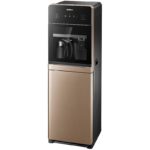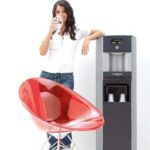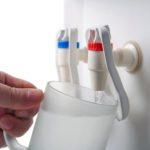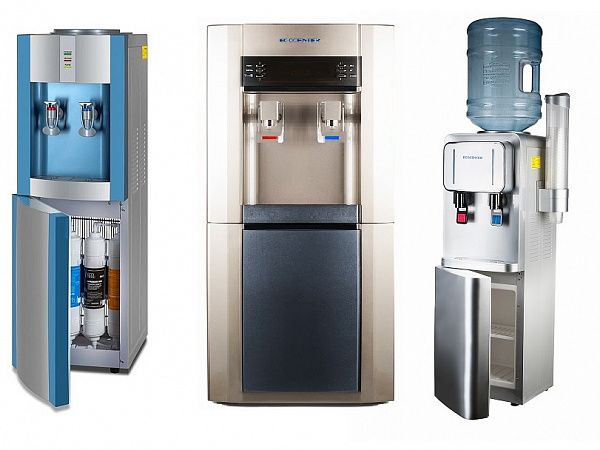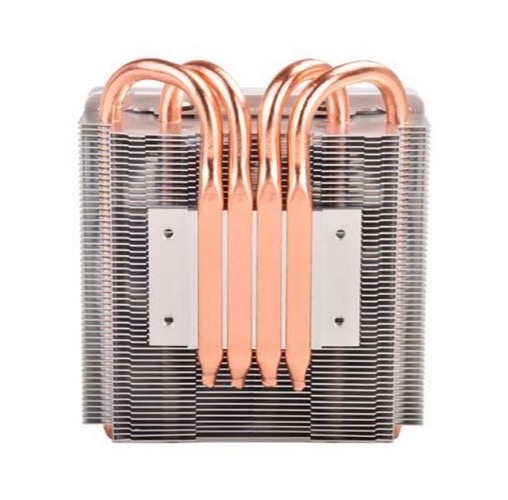What is a water cooler
The statement that a person is 70% water, that you should drink up to 2 liters of liquid per day to ensure the normal functioning of the body, is known to many. However, every year there is less and less clean water.
Long gone are the days when you could drink water from a tap or from a soda fountain. A large amount of chlorine, microbes, bacteria and harmful impurities make it unsuitable for drinking in its raw form.
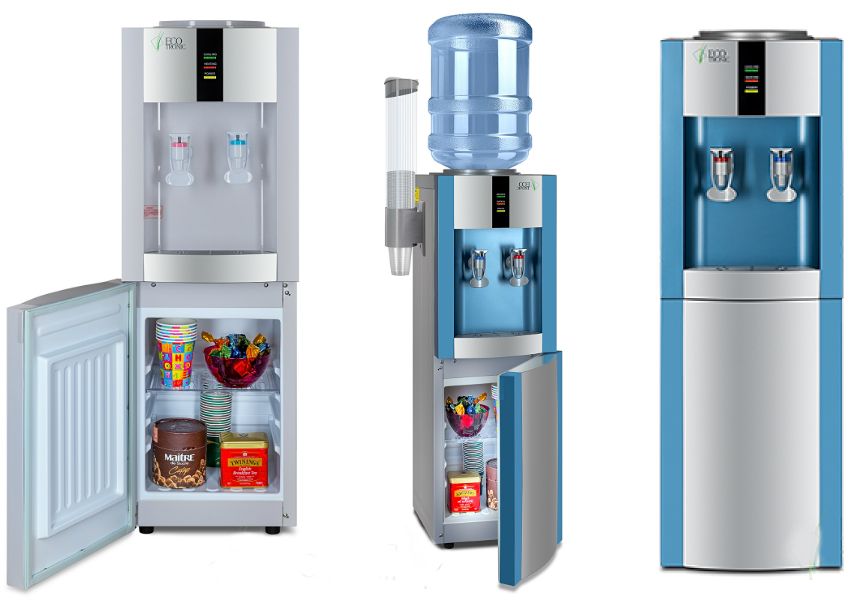
The problem of providing people with drinking water has long been successfully solved by coolers.
The content of the article
What is a water cooler
A cooler is a unit for distributing chilled bottled water in public places and at home. It is also called a dispenser.
Description
Bottle with pump – the simplest and most primitive version of equipment for bottling H2A. It is still used in small offices, apartments, and country houses. This device has the advantages of being compact and easy to use.
The “disadvantage” for us, spoiled by civilization, is the lack of heating and cooling functions for the liquid.
Cooler or dispenser - the most common device for dispensing H2A. Widely used in offices, childcare centers, gyms, medical organizations, shopping centers, as well as in houses and apartments.

The cooler is a plastic case with a special hole that matches the diameter of the bottle neck.The front panel contains fluid supply taps and heating and cooling indicators. The device is powered from the mains (220 V) and equipped with special sensors. When the water reaches the set temperature, the sensors put the unit into “sleep” mode, which significantly saves energy.
The liquid in the dispenser is not brought to a boil. When it is heated to a temperature of 95-98ABOUTC, sensors turn off the device when cooled to 85-86ABOUTC – include. This allows you to preserve the beneficial natural properties of water.
The liquid in the dispenser is cooled at a set temperature of +5ABOUTFrom to +15ABOUTC, depending on the cooling method (thermoelectric, compressor).
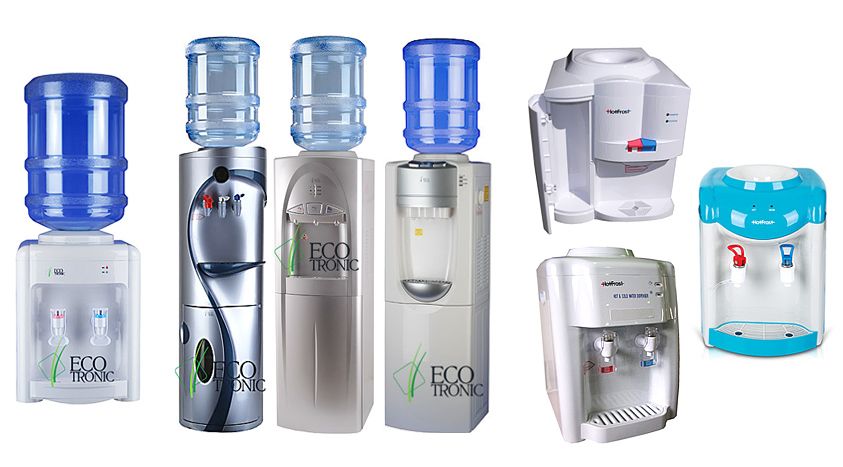
The coolers use bottles of various capacities - 5L (with a special adapter), 8L, 12L, 13L, 19L, 22L. The most common capacity is 19 liters.
The number of taps in the dispenser is one, two or three. Water dispensers without heating have one tap. Units that provide cooling and heating are equipped with two taps. Some devices, in addition to chilled/heated water, dispense liquid at room temperature and have three taps.
Ways to open taps:
- pressure with a glass or cup;
- pressing a button;
- opening manually.
Some dispenser models are equipped with a “child lock” function - a special blocking of the boiling water tap.
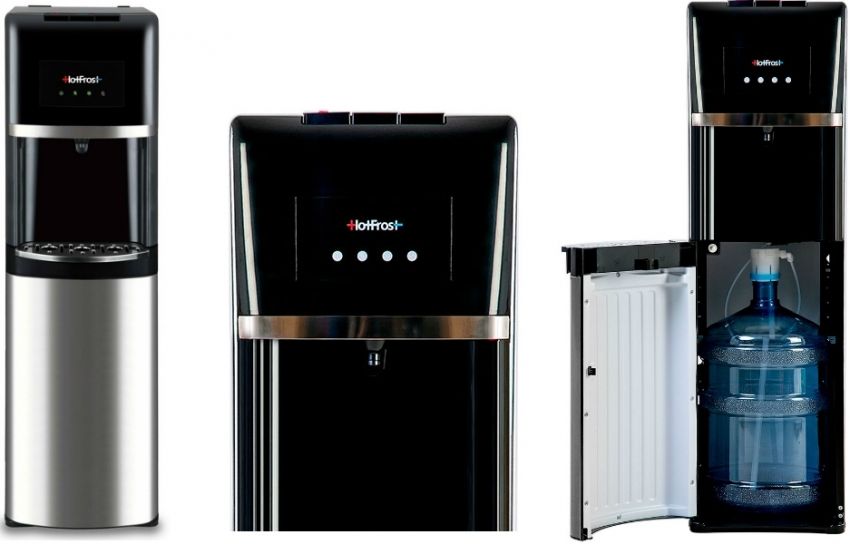
The main advantage of the cooler is the ability to get chilled or hot water at any time. At the same time, it retains its beneficial properties.
Disadvantages of dispensers:
- high probability of microorganisms getting inside when replacing an empty container with a full one;
- dependence on the quality of supplied water;
- dependence on compliance with hygiene standards by device users;
- fairly large dimensions of the unit;
- the need for constant replacement of containers;
- the need for a special room for storing empty and unused bottles;
- electricity consumption + constant purchase of water = low efficiency.
IMPORTANT! For safety and economy reasons, it is recommended to turn off the cooler at night when leaving work or leaving for a long period of time.
Purifier – flow filtration cooler. This device is an alternative to water dispensers that use bottled water. Purifier performs three functions at once. In addition to cooling and heating, it purifies and filters running water using reverse osmosis or ultrafiltration. The liquid is purified through a series of filters and enters a storage tank, from which it is distributed into tanks for cold and hot water.
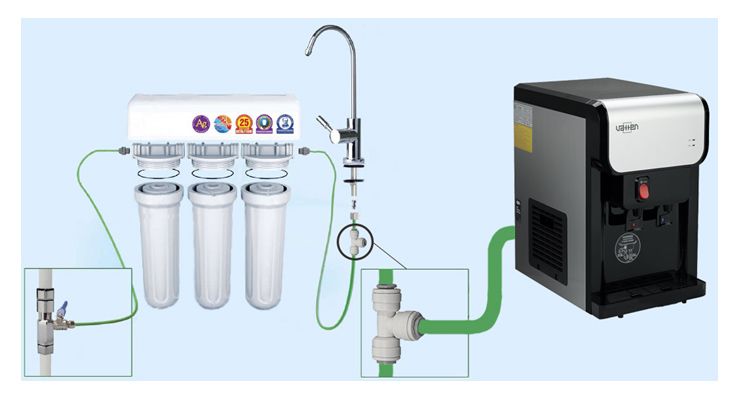
Advantages of a flow filtration cooler:
- gentle filtration, preserving the structure and composition of microelements of water (harmful impurities, chlorine, foreign odors and pathogenic microflora are released);
- small dimensions, neat appearance;
- lack of ties to suppliers;
- there is no need to store containers and constantly replace empty containers with full ones;
- low cost, since there is no need to overpay for water and its delivery.
Features of coolers
Modern industry produces a wide range of coolers, differing from each other in technical features and characteristics.
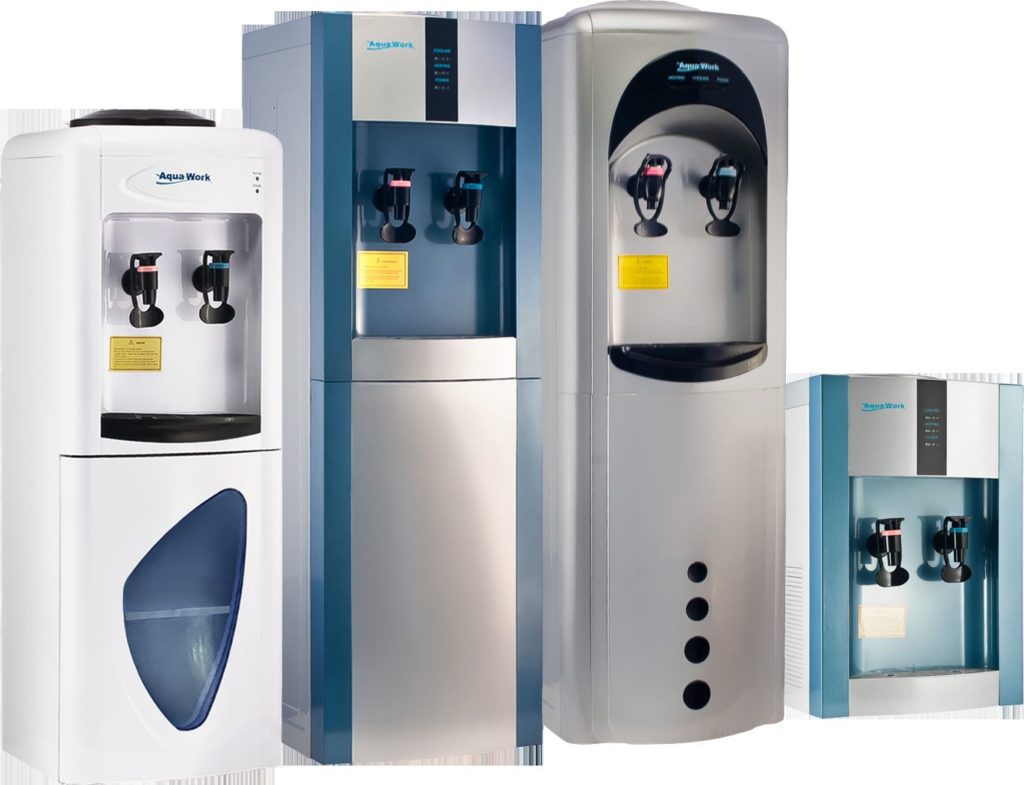
According to the installation method, dispensers are divided into:
- floor-mounted (installed on a smooth and level floor surface);
- tabletop (installed on any support, for example, a table, window sill, stool).
According to the type of liquid supply, both tabletop and floor-standing dispensers are:
- top loading;
- with bottom loading.
Top loading of bottles into the cooler creates inconvenience in operation, since it is difficult to change the container. Such dispensers look bulky.
Bottom-loading models are more convenient and functional and require less effort when replacing the container.
The liquid in the cooler is heated by an electric heater - heating element. According to the type of cooling, dispensers are divided into:
- compression (cooling occurs due to the coolant - refrigerant);
- electronic (cooling occurs using a Peltier element).
Dispensers can be equipped with additional options and functionality:
- holder for disposable glasses;
- carbonation installation;
- ice maker;
- ozonator;
- fridge;
- mini bar;
- locker;
- coffee maker.
Modern coolers have small dimensions and a modern design that allows them to fit into any interior.
Information about harm and benefits
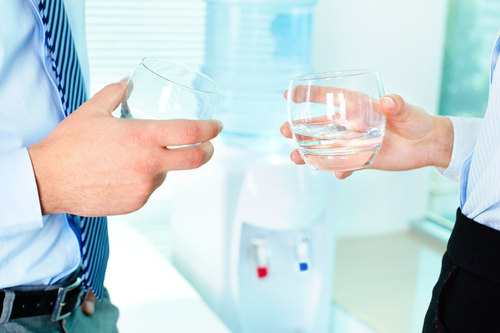
No one doubts that water from a cooler is much healthier and safer than water from the tap. The advantages include:
- cleaning N2O from bacteria, viruses and harmful impurities;
- it can be drunk without boiling;
- cleaning ensures a soft and pleasant taste;
- there is no need to use a kettle when brewing tea or coffee;
- the cooler allows you to drink a glass of chilled water in hot weather, regardless of the presence of a refrigerator;
- You can quench your thirst anywhere (office, shopping center, medical facility, gym).
Drinking from a cooler can be harmful in the following cases:
- an unscrupulous supplier supplies products that do not meet sanitary standards (water contains harmful impurities, microorganisms and bacteria);
- too thorough cleaning, sometimes with the use of antibiotics, as a result of which both harmful and beneficial substances are removed;
- the use of low-quality plastic containers (water acquires a plastic taste due to the ingress of bisphenol, styrene, antimony and other harmful components);
- non-compliance with the rules for replacing bottles, dirty hands of the employee - this can lead to dirt and pathogenic microflora getting into the container, which will worsen the quality of the water and can cause intestinal infections;
- failure to comply with the rules for servicing the device (disinfection is carried out every six months);
- non-compliance with the rules for using the dispenser by the consumers themselves (improper operation, non-compliance with hygiene standards).
Summary
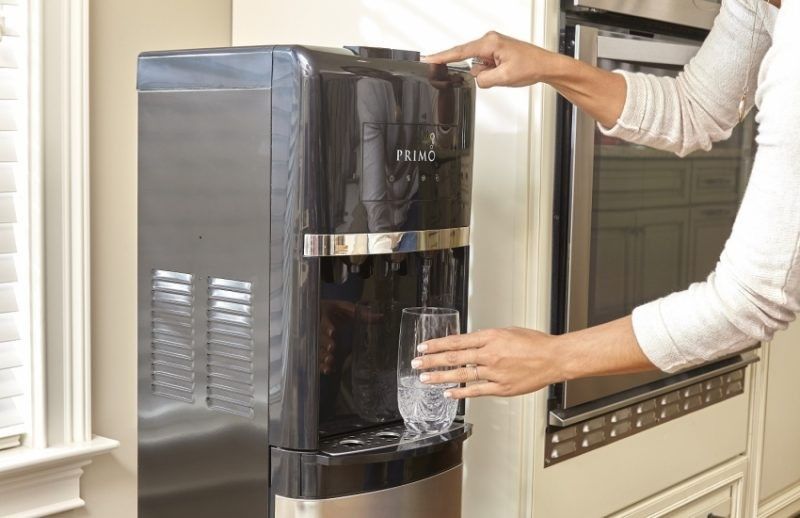
The quality and quantity of water consumed is an important condition for human life. A cooler is a useful and convenient invention that helps solve the problem of filling the body with life-giving moisture.
In order for the dispenser to bring benefits and delight you with a glass of cold water in the heat and a cup of aromatic hot tea in the cold, you need to be especially careful in choosing both the equipment itself and the company that will provide service and supply full containers.
IMPORTANT! Don't buy the cheapest water! You should cooperate only with a trusted supplier who has been operating in this market for several years.

